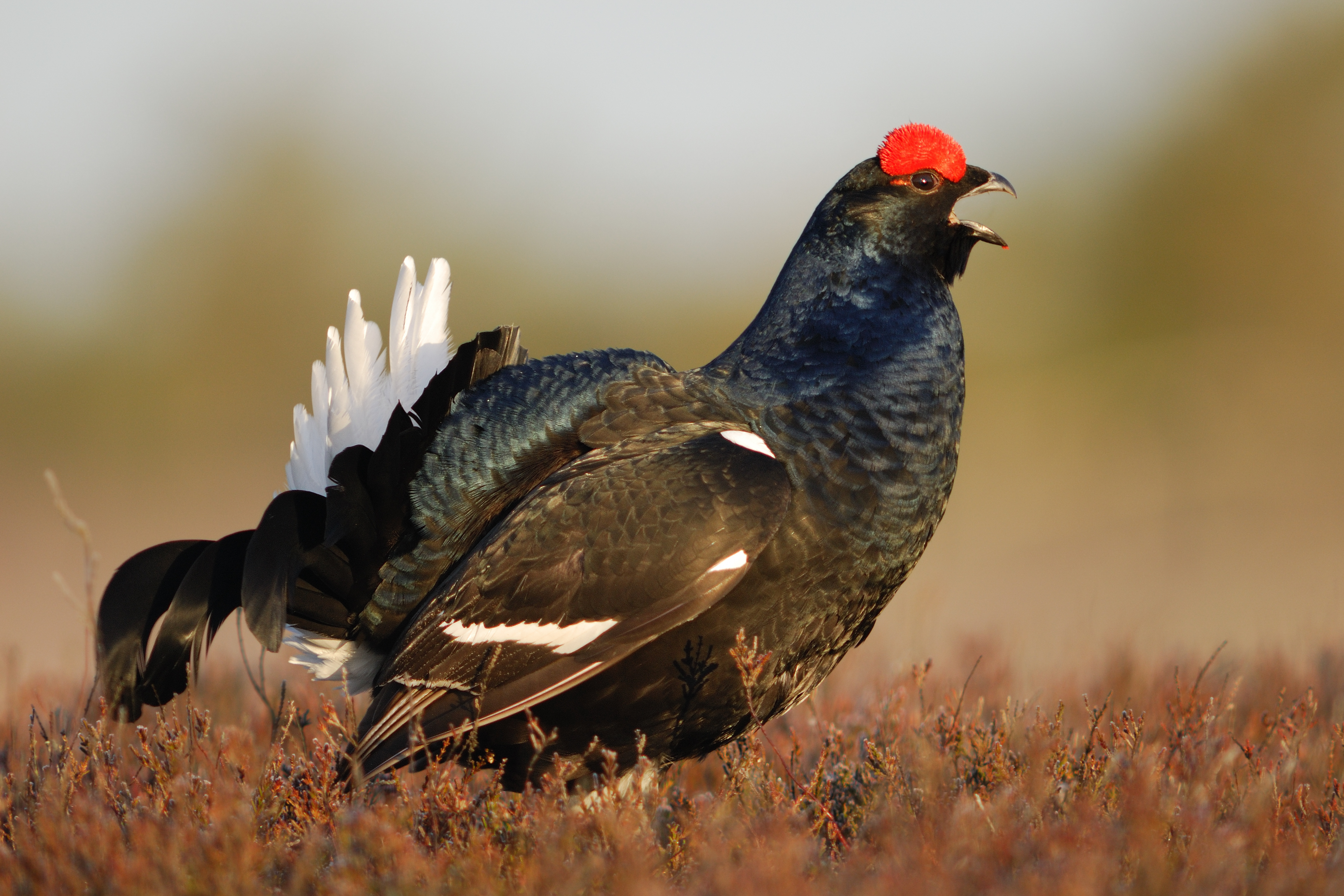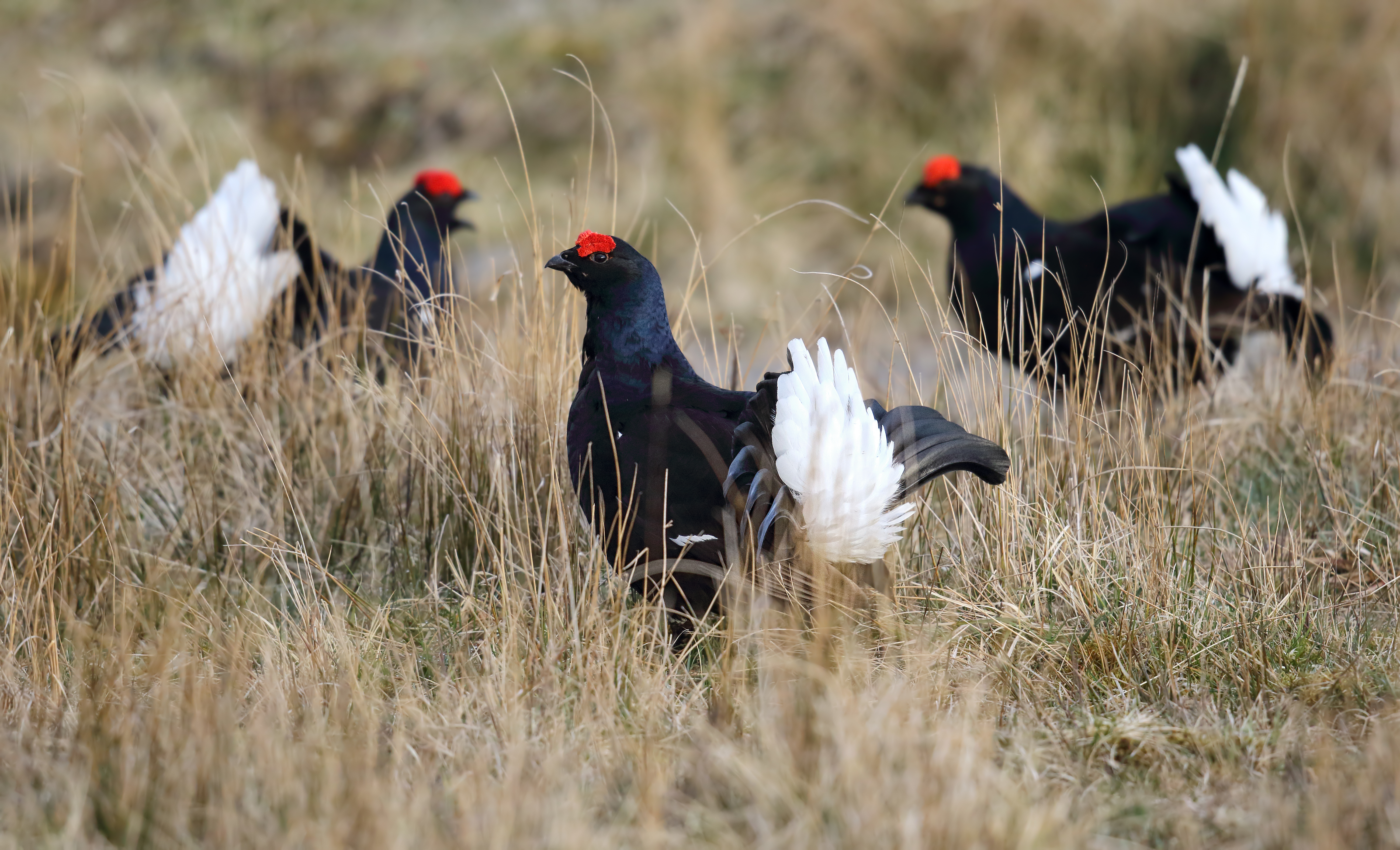Exemplary countryside management at the Glenlivet Estate means declining species, such as the black grouse, are thriving.
As dawn crept into my room in Tomintoul, a blackbird proclaimed it was time to rise even if the ice lacing the window indicated that winter still had a grip. Tomintoul is the highest village in the Highlands and the roads around it are often shut by drifting snow. I was here to visit the Glenlivet Estate, and so at 5am sharp, wildlife guide David Newland and the estate’s countryside manager, Vicky Hilton, picked me up.
We drove over Bridge of Avon and through mixed coniferous woodland, grasses beaded with frost, heading for a large stretch of open moor.
David, who runs Glenlivet Wildlife, has been working in partnership with Glenlivet since 2005. The beautiful 58,000-acre estate lies in the heart of the Cairngorms National Park between the Ladder hills and the Cromdale hills. The estate’s efforts to balance the likes of waymarked walks and a new mountain-biking trail with traditional farming, forestry, sport, fishing and wildlife management, to the good of the local economy, is exemplary.
Passing hillsides thick with juniper – perfect habitat for a wealth of species – we continued on to a panoramic viewpoint to a blackcock lek, the main purpose of my visit.
There can be few more enthralling sights than a blackcock lek at dawn – particularly when viewed through binoculars so you can see all the drama up close, as the competing males, dressed in their finery and with colours shimmering like oil on a puddle, step back and advance, occasionally tweaking a feather out of a rival’s spring fancy dress. Blueblack plumage with engorged ruby-red wattles and a brilliant white lyre-shaped tail make this one of our most spectacular birds.
It’s also one that David values highly from a tourist point of view. He often escorts photographers to a portable hide, where they will sit out the night until the small hours when the birds first gather. These encounters mean that black grouse are beginning to pay their way and are forming part of a valuable wildlife tourism asset to estates in their strongholds.
Lekking is dominated not only by the impressive visual display; the birds’ vocalisations – bubbling, frothing, hissing calls – are also a key element, and David explains that traditional lek sites are usually in natural amphitheatres where sound carries easily.

In a nearby birch tree an unconcerned greyhen pecked at buds before descending to the ground to cause mayhem among the males. Even then with plenty of choice her approach was laidback. The cocks, meanwhile, of which there were around a dozen on this site, exploded up out of the tawny rushes like puppets in a Punch and Judy Show, only to quickly disappear again
to spar with one another.
David’s gentle yet assured approach to all his wildlife subjects is infused with passion and humour. ‘There he is on his skateboard,’ he says of one male bird in hot pursuit of a hen, a perfect description of the way the bird almost slides effortlessly across, wings outstretched, tail in a fan and legs all but hidden. While David agrees that the black grouse has become a vital part of the estate’s tourist assets, he insists on only taking people out at dawn or dusk, the peak times for wildlife viewing.
‘There is no point going out in the middle of the day – you’d see little or nothing.’ It is also clear that though pick-ups are punctual, he is not one to be dominated by a clock – if something appears when it’s time to go back, he will extend his trips. This is the mark of a true wildlife watcher.
These black grouse are part of the whole picture of the estate, he says, and is keen to emphasise that it is the way everything meshes together to produce a healthy ecosystem that interests him most.
Black grouse elsewhere in Scotland are not so lucky. In fact, much research has been done into why their numbers have declined so steeply, and it’s pretty clear that the reasons are wholly attributable to man. The trend is bucked in Speyside, Deeside and Tayside – here, despite recent hard winters and dismal summers, numbers are fairly stable, and the birds appear to be doing well. This, though, is not to suggest populations are anything like what they were in the days when black grouse (viewed as a poor relation of the red) was treated as a pest and shot on sight.

Though some conservationists still blame shooting for the bird’s demise, habitat loss is the real culprit. While the red grouse can exist happily in an ecosystem dominated by heather, the black grouse needs a seasonal diversity of habitat: young plantations, forest edges, moorland and traditional farming with rotational cropping. At Glenlivet, says Vicky, they work hard to provide this necessary variation, constantly seeking to improve and expand much of what has proved valuable to the birds in the past. Vermin control is vital too for a bird that often roosts on the ground.
Back at the lek, the moorland orchestrations dominated by the blackcocks’ percussion were joined by the melancholy cries of curlew and those of lapwing, oystercatcher and distant snipe. A group of hinds appeared away to the west and broke into a trot across the hillside. Stray rays lifted over the hill and momentarily lit a wind-sculpted larch with gold. Meadow pipits flew past in small flocks. Roe and hares watched us carefully.
On his tours David monitors the wildlife and keeps detailed records of sightings and concerns. He and Vicky work closely with the estate’s 35 farm and shooting tenants. Vicky has been here for five years and also has a passion for her diverse work, much of which is educational.
As part of the celebrations for the Year of Natural Scotland, she worked with Tomintoul Primary School during the estate’s Black Grouse Week. She also attends to a mass of deciduous plantings, including a 60-acre wood celebrating the Queen’s Jubilee, and tries to ensure tourism mixes harmoniously with wildlife interests. She is involved with mink management, water vole conservation and wildcat and owl projects.
Tourism in the area is further benefiting from the establishment of the Tomintoul and Glenlivet Development Trust – a community-led initiative that is helping to drive economic regeneration of the area.
I left Glenlivet Estate with my dented faith in countryside management restored. It’s only by taking in the whole picture, encompassing all those living and working in the rural environment in harmony with the natural world, that we can really move forward. Glenlivet appears to be doing
all of that and more.
Find out more about the Glenlivet Estate at www.glenlivetestate.co.uk
This feature was originally published in 2013.
TAGS

